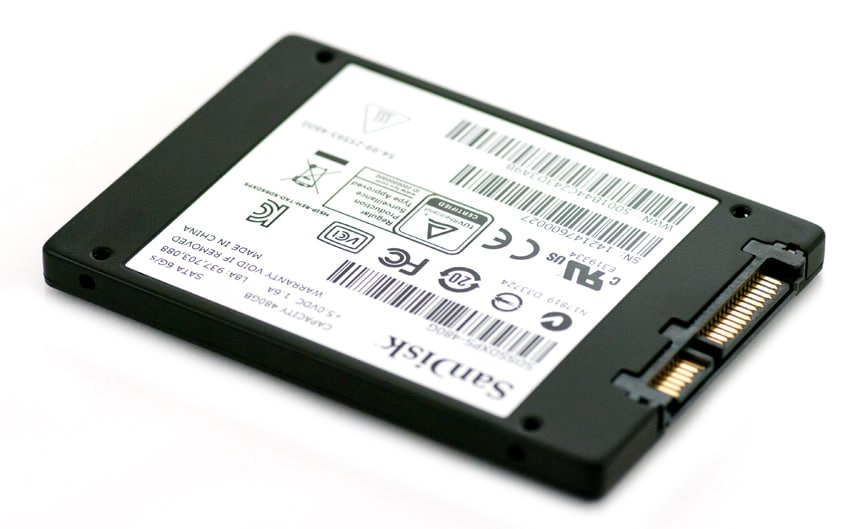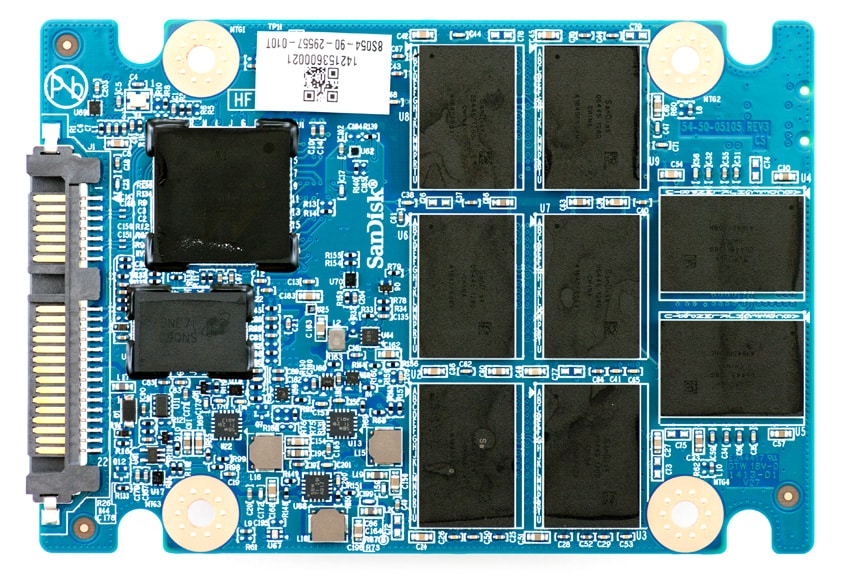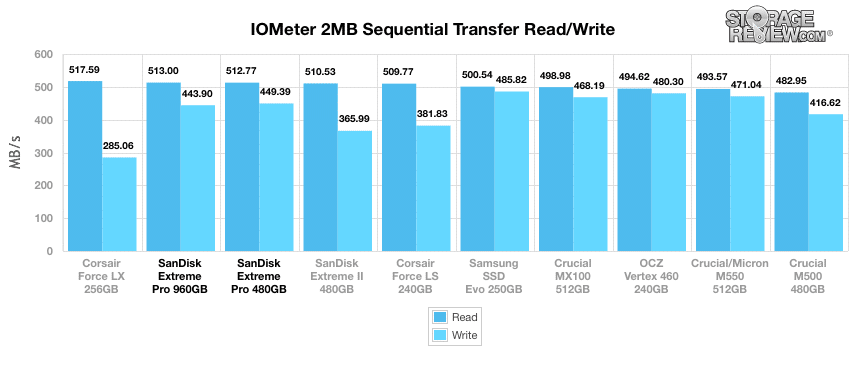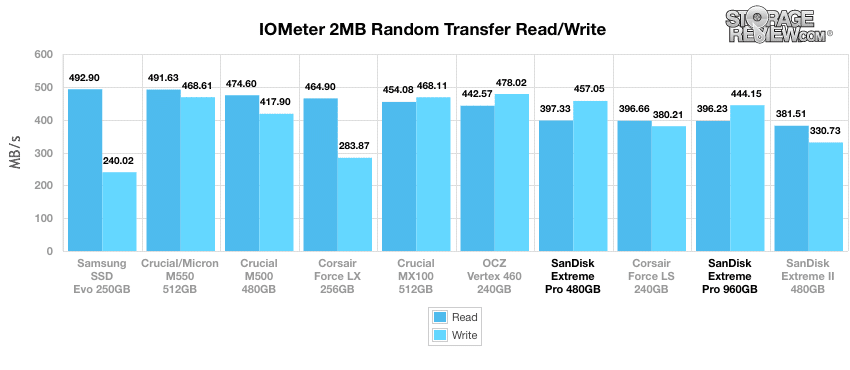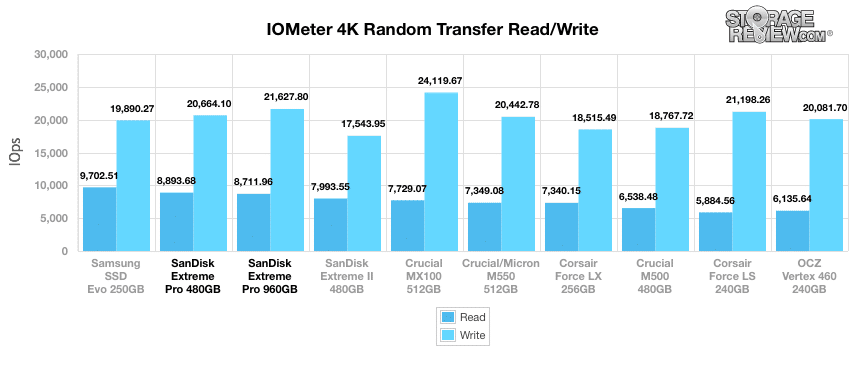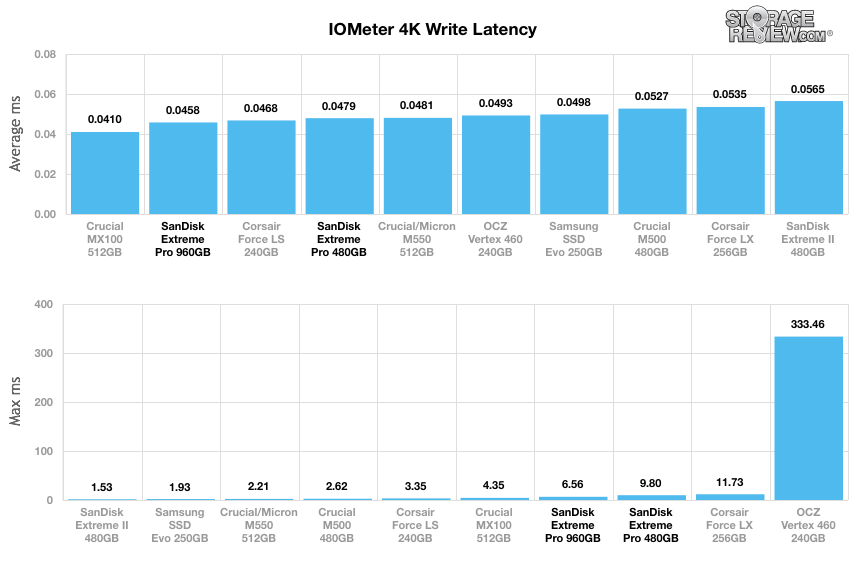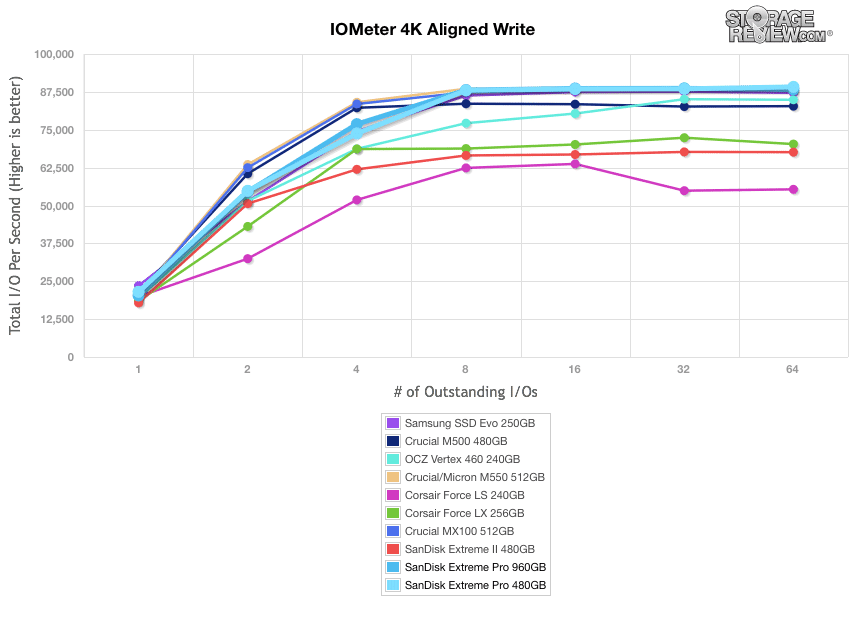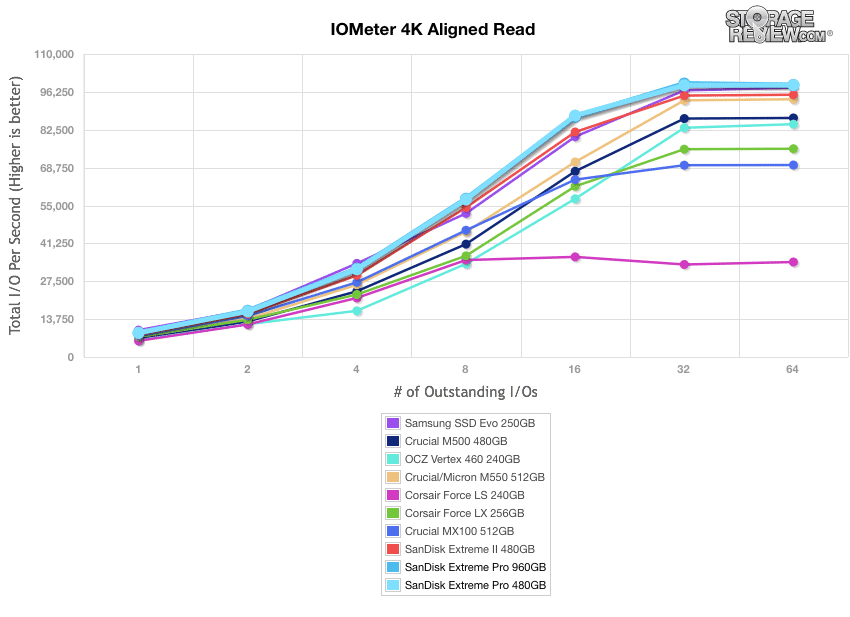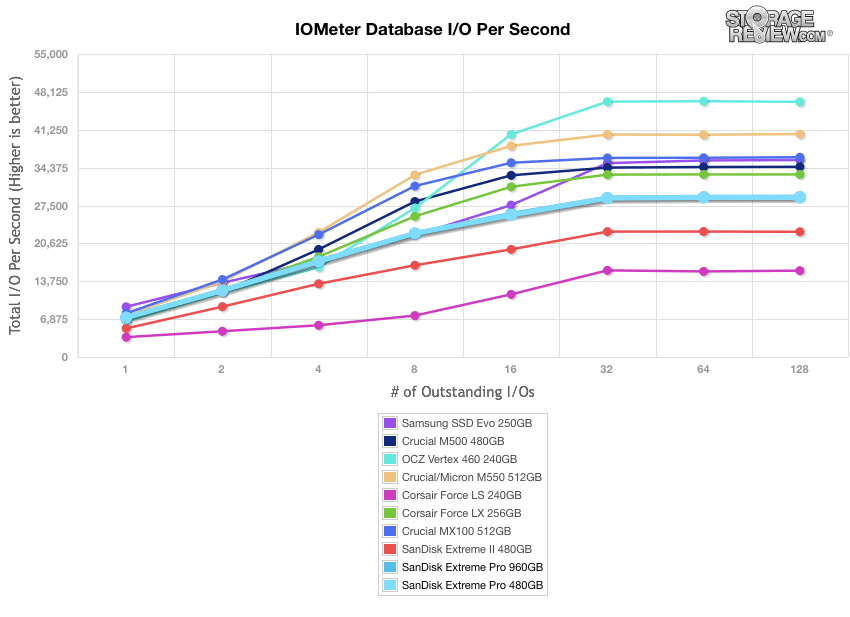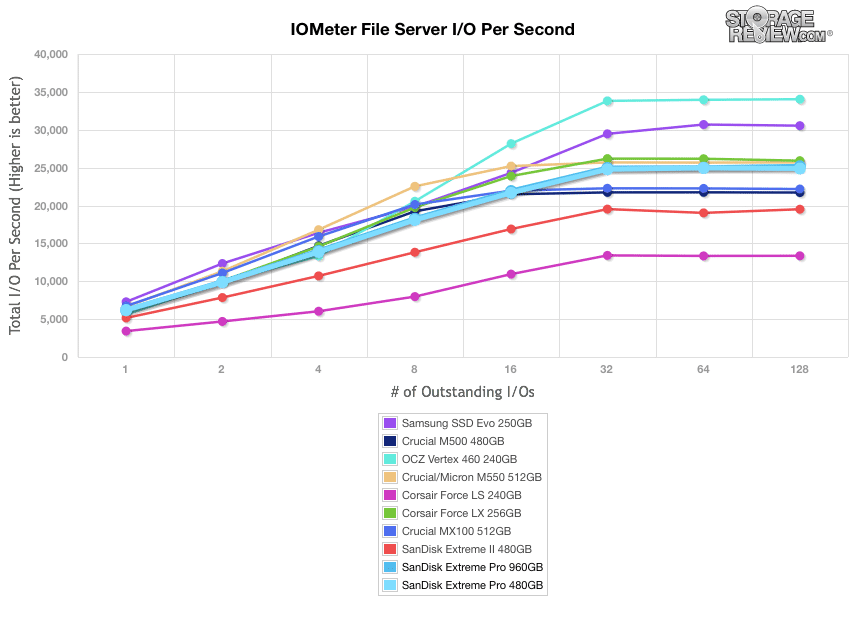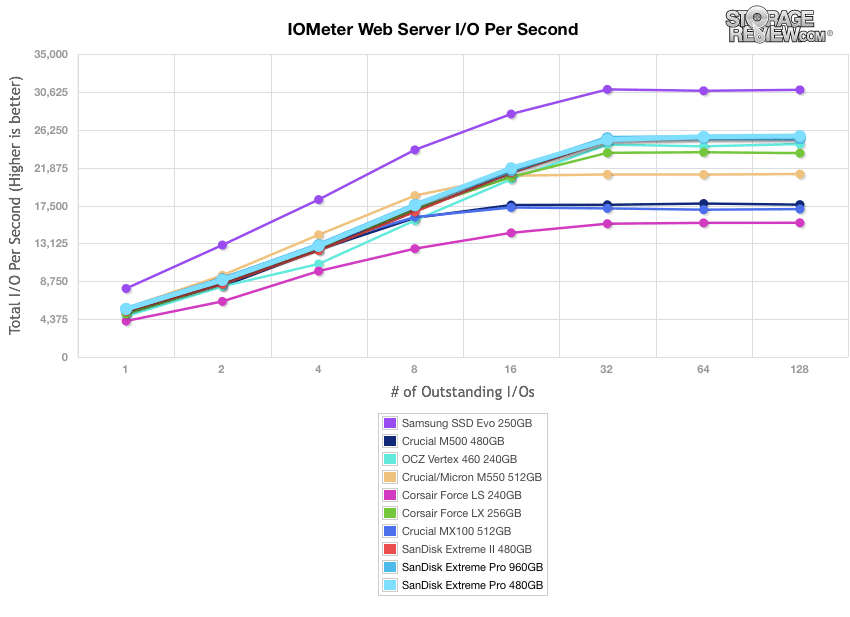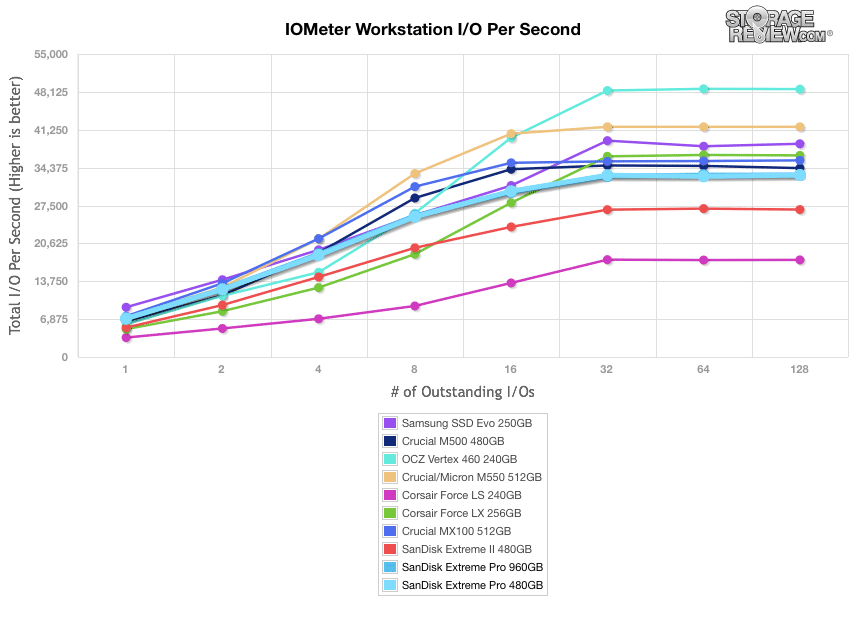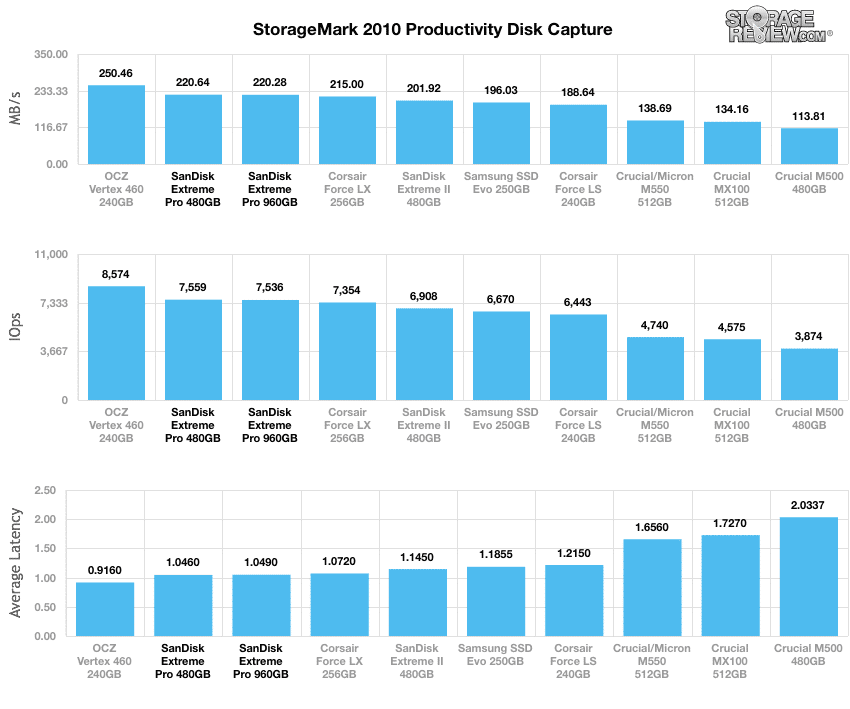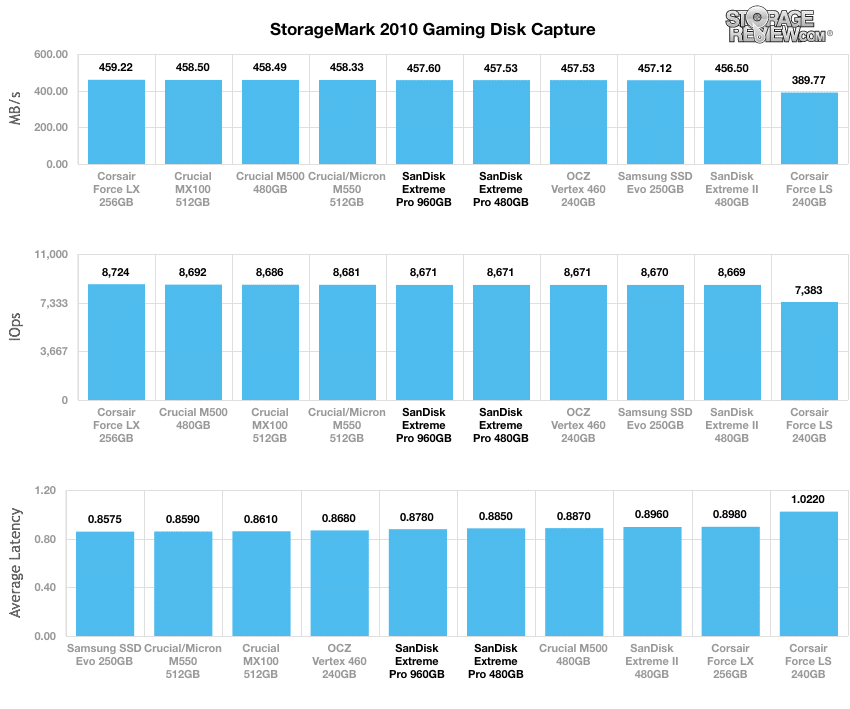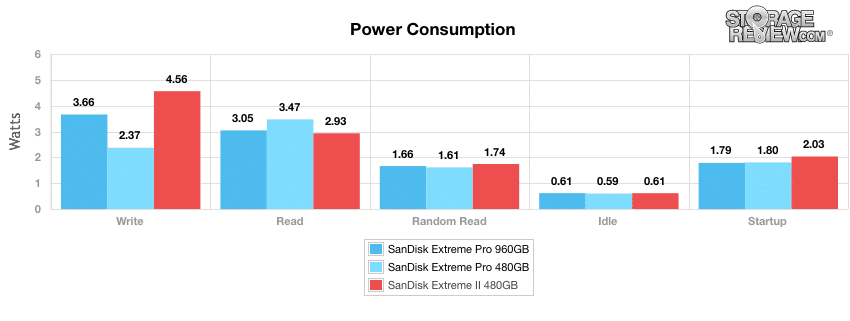
The SanDisk Extreme PRO SSD is designed specifically for gamers, PC enthusiasts, and media professionals who require consistent, top-in-class real-world performance out of their storage. With its quoted sequential read speed of 550MB/s and write speed up to 520MB/s, the SanDisk’s new Extreme PRO certainly is specced to deliver the performance needed for graphics-intensive applications in addition to speedy gaming load times. The Extreme PRO also boasts an industry first a 10-year warranty to assuage any concerns about the drive's expected longevity and SanDisk's commitment to the drive.
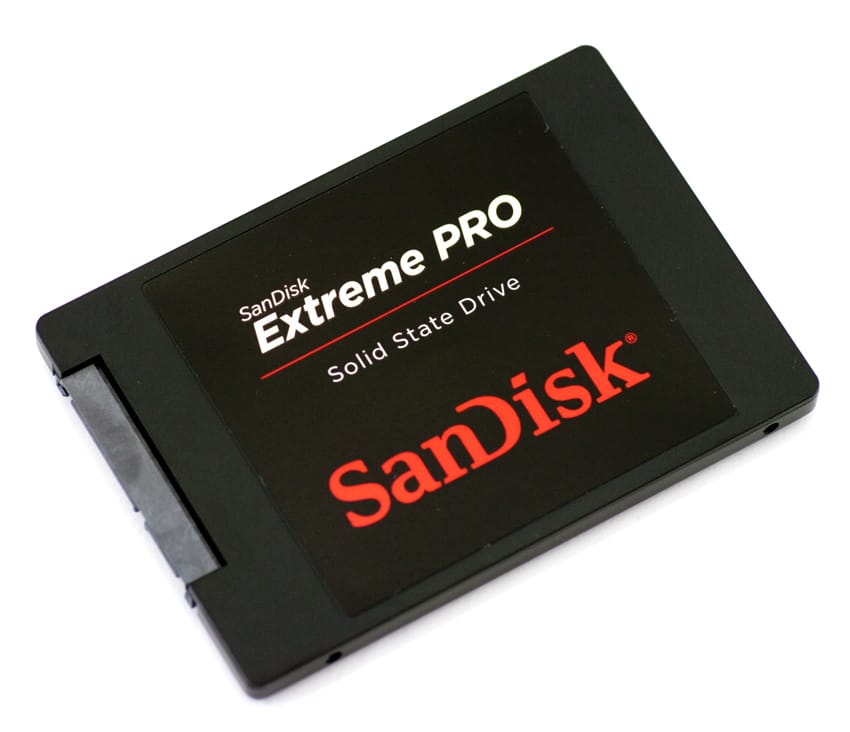
The SanDisk Extreme PRO SSD features a unique tiered caching feature to help improve random write performance. This tiered functionality comprises of three storage layers: Volatile cache (DDR DRAM cache), nCache (A non-volatile flash write cache that optimizes user computing experience by balancing all-out speed with long drive life), and mass storage (MLC NAND flash). The nCache is used to collect small writes known as segments at high speed and then flush and consolidate them to larger MLC sections of the NAND flash memory array. This isn't a new feature but architecturally differentiates the SanDisk offerings from others in the space.
The SanDisk Extreme PRO SSD carries a 10-year warranty and comes in three capacities: 240GB, 480GB, and 960GB with street prices of roughly $200, $370, and $700, respectively. For this review will be looking at the 480GB and 960GB capacities.
Specifications
- Capacities:
- 240GB (SDSSDXPS-240G-G25)
- 480GB (SDSSDXPS-480G-G25)
- 960GB (SDSSDXPS-960G-G25)
- Flash: SanDisk 1Ynm, eX2 ABL MLC, Toggle
- Interface: SATA 6Gb/s backward compatible to 3Gb/s & 1.5Gb/s
- Performance:
- Sequential Read: 550MB/s
- Seq. Write: 520MB/s (240GB), 515MB/s (480GB, 960GB)
- Random Read: 100,000 IOPS
- Random Write: 90,000 IOPS
- Power
- Active Power:
- 0.13W (240GB)
- 0.15W (480GB, 960GB)
- Max Read Operating
- 2.7W (240GB, 480GB)
- 2.9W (960GB)
- Max Write Operating
- 2.6W (240GB)
- 3.5W (480GB)
- 3.6W (960GB)
- Idle
- 82.5mW (240GB)
- 100mW (480GB, 960GB)
- Active Power:
- DEVSLP
- 5.5mW (240GB)
- 19.0mW (480GB)
- 19.0mW (960GB)
- Endurance: >80 TBW
- Weight
- 58g (240GB, 480GB)
- 61g (960GB)
- Size
- 2.5” SFF-8223 &-8201
- 7.0mm x 69.85mm x 100.5mm
- Operating Temp: 0°C to 70°C
- Non-Operating Temp: -55°C to 85°C
- Operating Vib: 5gRMS, 10–2000Hz
- Non-Operating Vib: 4.9gRMS, 7–800Hz
- Non & Operating Shock: 1,500G @ 0.5ms half sine
- Certifications: FCC, CE, UL, ULc, TUV, KC, BSMI, ACA, VCCI
- Warranty: 10-year limited warranty
Design and build
The SanDisk Extreme PRO’s 7mm form factor is nearly identical to other SanDisk SSDs (such as the Extreme II), the only difference being the branded product name. It has a smooth and refined black metal enclosure with SanDisk’s usual gold, black and red color scheme. SanDisk's durable aluminum case is specifically designed to resist shocks and vibrations, preserving the integrity of user data.

The reverse side of the SanDisk Extreme PRO shows off the product information sticker, providing all the relevant information the user needs (i.e. capacity, serial number, etc.). Mounting is done using the four screw holes (two per side) which allows the Extreme PRO to be easily mounted.
At the heart of the SanDisk SSD is the Marvell 9187 controller as well as SanDisk MLC NAND. SanDisk writes their own firmware for the drive.
Consumer Synthetic Benchmarks
All consumer SSD benchmarks are conducted with the mid-range StorageReview Consumer Testing Platform. The comparables used for the review below include:
- Crucial/Micron M550 (1TB, 20nm 64Gb, 128Gb MLC, Marvell 88SS9189 Controller, SATA)
- Crucial M500 (480GB, Marvell 9187, Micron 20nm MLC NAND, SATA)
- Crucial MX100 (512GB, Marvell 88SS9189, 16nm 128Gb/20nm 128Gb, SATA)
- OCZ Vertex 460 (240GB, Indilinx Barefoot 3 BF3-M10, Toshiba 19nm MLC Flash, SATA)
- Corsair Force LS (240GB, 19nm Toshiba MLC, SATA)
- Corsair Force LX 256GB (28Gbit Micron 20nm ONFI MLC NAND, Silicon Motion SM2246EN controller, SATA)
- Samsung SSD 840 EVO (250GB, 400MHz Samsung 3-core MCX controller, Samsung 1x nm Toggle NAND Flash, SATA)
- SanDisk Extreme II (240GB, 19nm MLC NAND, Marvell 88SS9187, SATA)
All IOMeter figures are represented as binary figures for MB/s speeds.
Our first test measures 2MB sequential performance. Both the SanDisk Extreme PRO 480GB and 960GB performed very well, posting nearly identical results with reads of 512.8/513.0MB/s, respectively, and writes of 443.9/449.4MB/s, respectively. Both models were near the top of the leaderboard in the read column, just behind the Corsair Force LX and towards the middle of the pack in write speeds.
Moving to our 2MB random transfer performance tests, the Extreme PRO 480GB scored 397.3MB/s read and 457.1MB/s write, while the 960GB model posted 396.2MB/s read and 444.1MB/s write. The read activity of the two new SanDisk drives rank at the bottom of the pack while the write scores were in the upper middle.
Switching to smaller 4K random transfers, the SanDisk Extreme PRO drives performed very well, boasting 8,894 IOPS read and 20,664 IOPS write for the 480GB model. The 960GB capacity showed similar results with 8,712 IOPS read and 21,627 IOPS write.
Comparing write latency, the Extreme PRO SSDs ranked near the top of the leaderboard for average latency but in the middle for max latency.
In our next 4K test, we move to a workload with 100% write activity, which scales from 1QD to 64QD. In the aligned write setting, the Extreme Pro 480GB scaled from 21,531IOPS up to 89,146IOPS, while the 960GB model scaled from 20,321IOPS up to 88,340IOPS; both SanDisk drives placed at the top of the leaderboard.
The Extreme PRO SSDs showed off their great performance again in aligned read activity, posting a blistering 98,681IOPS and 98,737IOPS by the 64QD for the 480GB and 960GB, respectively. Once again, both drives ranked at the top of the pack.
Our last series of synthetic benchmarks compare the hard drives in a series of server mixed-workloads with a queue depth of ranging from 1 to 128. Each of our server profile tests has a strong preference towards read activity, ranging from 67% read with our database profile to 100% read in our web server profile. In all of our mixed workloads, the SanDisk Extreme PRO SSDs ranked anywhere from the bottom to the upper part of the pack.
The first is our database profile, which consists of 67% read and 33% write workload mix primarily centered on 8K transfer sizes. For this benchmark, the SanDisk Extreme PRO drives boasted Q128 results of 29,020 and 28,940 IOPS for the 480GB and 960GB respectively.
The file server profile has 80% read and 20% write workload spread out over multiple transfer sizes ranging from 512-byte to 64KB. The Extreme PRO 480GB posted 24,883 IOPS at 128QD while the 960GB showed 25,171 IOPS.
Our web server profile is read-only with a spread of transfer sizes from 512-byte to 512KB. The Extreme PRO SSDs ranked at the top of the pack, just behind the Samsung Evo.
The last profile looks at workstation activity, with a 20% write and 80% read mixture using 8K transfers. By Q128, the two SanDisk Extreme PRO SSDs performed near the bottom of the pack.
Consumer Real-World Benchmarks
For the average consumer, trying to translate random 4K write speeds into an everyday situation is pretty difficult. It helps when comparing drives in every setting possible, but it doesn't exactly work out into faster everyday usage or better game loading times. For this reason we turned to our StorageMark 2010 traces, which include HTPC, Productivity, and Gaming traces to help readers find out how a drive might rank under these conditions.
The first real-life test is our HTPC scenario. In this test we include: playing one 720P HD movie in Media Player Classic, one 480P SD movie playing in VLC, three movies downloading simultaneously through iTunes, and one 1080i HDTV stream being recorded through Windows Media Center over a 15 minute period. Higher IOps and MB/s rates with lower latency times are preferred
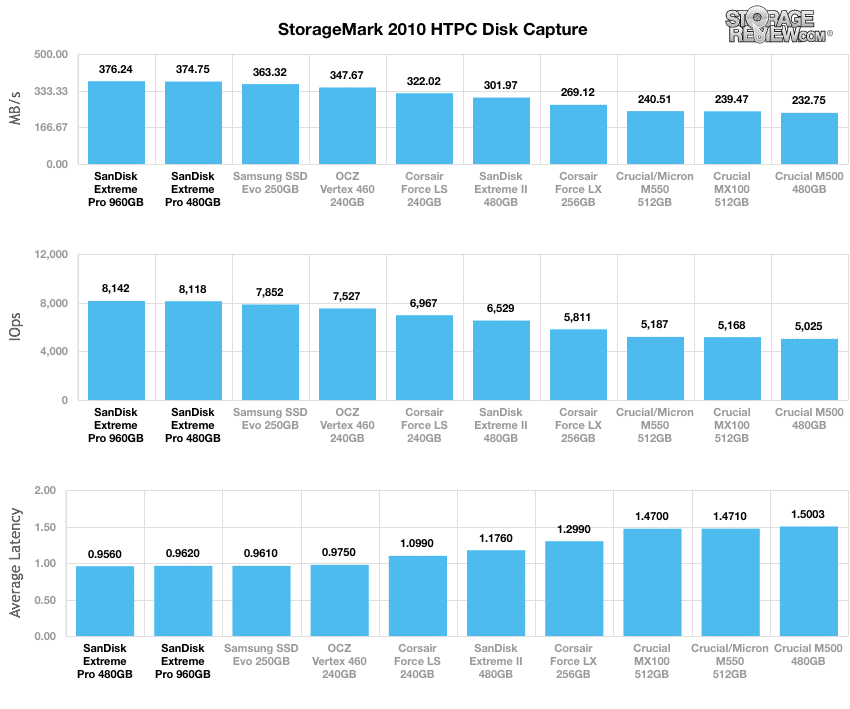
In our HTPC profile, the Extreme PRO SSDs showed pretty impressive results, ranking at the very top of the pack in all of our tests with 8,118/8,142IOPS, 374.8/376.2MB/s, and an average latency of 0.956/0.962ms for the 480GB and 960GB, respectively.
Our second real-life test covers disk activity in a productivity scenario. For all intents and purposes this test shows drive performance under normal daily activity for most users. This test includes: a three hour period operating in an office productivity environment with 32-bit Vista running Outlook 2007 connected to an Exchange server, web browsing using Chrome and IE8, editing files within Office 2007, viewing PDFs in Adobe Reader, and an hour of local music playback with two hours of additional online music via Pandora.
In our Productivity trace, the two SanDisk Extreme PRO SSDs continued its great performance, coming in right at the top of the pack, just behind the OCZ Vertex 460 240GB.
Our third real-life test covers disk activity in a gaming environment. Unlike the HTPC or Productivity trace, this one relies heavily on the read performance of a drive. To give a simple breakdown of read/write percentages, the HTPC test is 64% write, 36% read, the Productivity test is 59% write and 41% read, while the gaming trace is 6% write and 94% read. The test consists of a Windows 7 Ultimate 64-bit system pre-configured with Steam, with Grand Theft Auto 4, Left 4 Dead 2, and Mass Effect 2 already downloaded and installed. The trace captures the heavy read activity of each game loading from the start, as well as textures as the game progresses.
In our read-intensive Gaming trace, the SanDisk Extreme PRO drives kept their pace, though virtually every drive posted almost identical performance results.
Power Consumption
Low idle power consumption is vital when it comes to SSDs as most of their lifespan is in the idle state.
That said, our power tests showed very low idle power consumption from the Extreme PRO SSDs at 0.59W and 0.61W for the 480GB and 960GB respectively. As a comparison, the SanDisk Extreme II 480GB recorded idle power consumption at 0.61W.
Conclusion
The SanDisk Extreme PRO line of SSDs is designed as a high-performance drive for gamers, PC enthusiasts, and media professionals who require consistent, top-in-class real-world performance. In order to cater to their target demographic, SanDisk quotes impressive reads up to 550MB/s and writes up to 515MB/s and is equipped with the Marvell 9187 controller with custom firmware and SanDisk's MLC NAND. As far as pricing goes, the new Extreme PRO line is competitive across all capacities compared to others in its class.
When looking at its performance in greater detail, it wasn't a surprise to see that the SanDisk Extreme PRO posted top-in-class results in most of our application and synthetic benchmarks. In our synthetic tests, the Extreme PRO SSDs were at the top of the leaderboards in our 4K random read and write performance benchmarks and the top performer in our 8k 70/30 workload. The new SanDisk SSDs were also the best of the bunch in our 2MB sequential workload. In our random benchmark of the same size, however, the drives posted read activity near at the bottom of the pack. The write scores were placed in the upper middle echelon.
Our consumer real-world benchmarks are where the new SanDisk SSD really showed off its capabilities by demonstrating some seriously impressive results in all of our scenarios. This was particularly the case in our HTPC profile, where it boasted an IOPS of 8,118/8,142 and 374.8/376.2MB/s for the 480GB model and 960GB model, respectively, outperforming even the incomparable Samsung EVO by a noticeable margin. Additionally, it had no trouble ranking near the top of the pack in our gaming scenario, which wasn’t surprising as SanDisk indicated that their new drive was catered to the hardcore gamer demographic. All in all, this drive definitely delivered on the performance front.
Its very reasonable price tag coupled with its unique nCache Pro technology shows that the Extreme PRO can certainly deliver high performance at a consistent rate at a great value.
Pros
- Top-in-class performance
- SanDisk pedigree of reliability
- Industry leading 10-year warranty
Cons
- Struggles some with large block random activity
Bottom Line
The SanDisk Extreme PRO family of SSDs delivers consistent best-in-class real-world performance with the ability to easily handle virtually any resource-intensive application paired with an aggressive price point and industry leading warranty.

